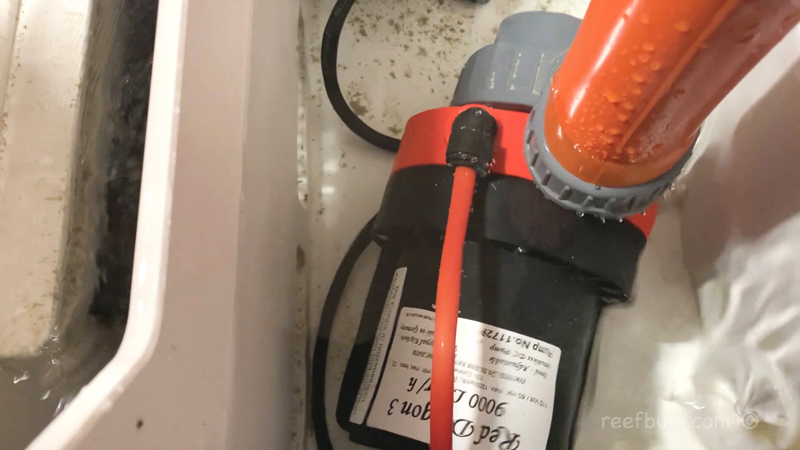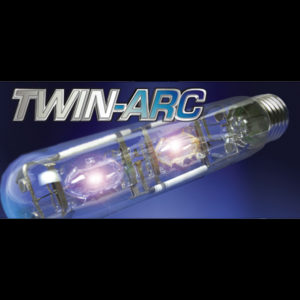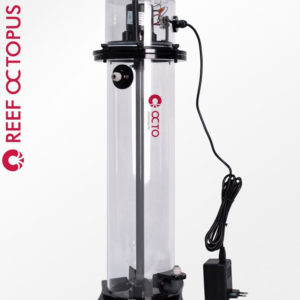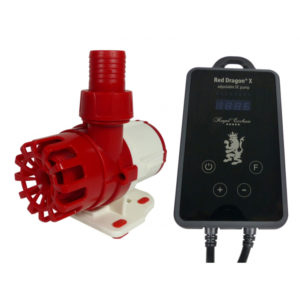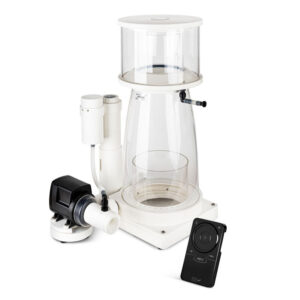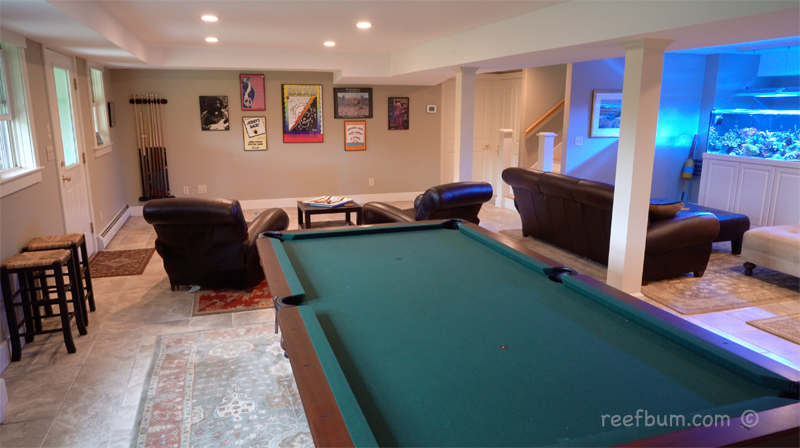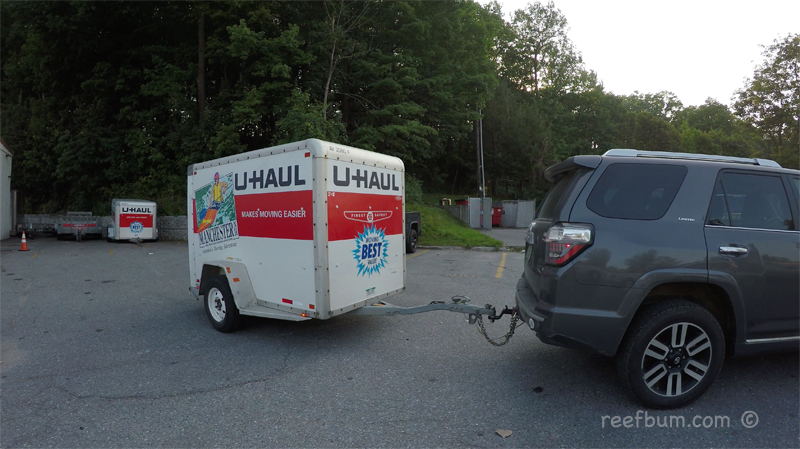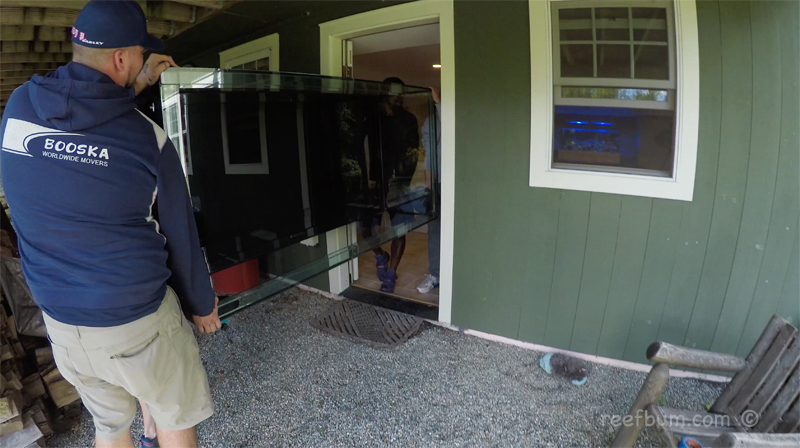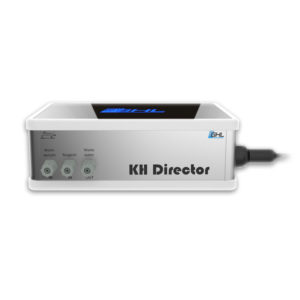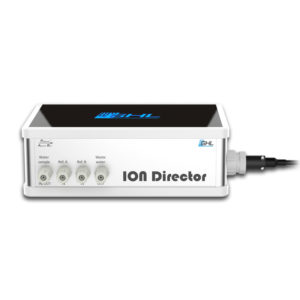This is Part #18 in a series of blog posts about my 225 gallon peninsula tank build.
Maintenance and tank husbandry are really important for a reef tank and I do not always look forward to it. But I know it has to be done and in the long run it increases the chances for success.
Like past tanks, I have created a maintenance schedule for this new peninsula tank. I have it laid out in excel and it reminds me what needs to be done.
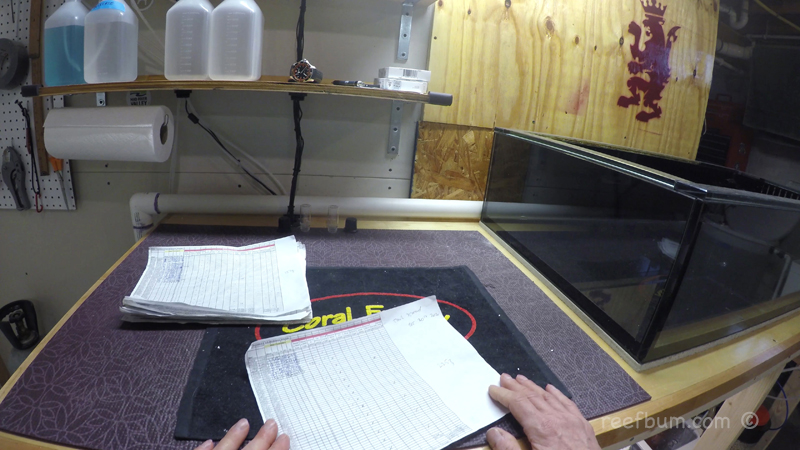
I have weekly, monthly, quarterly and even yearly chores on the list. On a weekly basis I empty and clean out the skimmer cup and do a ten percent water change.
Key Step – Siphoning Detritus
During these water changes I siphon out any detritus that has collected in my Dreambox sump. I also siphon out detritus in the display. Fortunately, it only settles in one spot near the end viewing panel due to the tank’s strong flow.
Additionally, every week I remove any gunk from the filter bags by spraying them with a short garden hose I hook up to the slop sink. Weekly maintenance is also performed on the Pax Bellum ARID algae reactor. Film inside the reactor is wiped off and the chaeto is rinsed in fresh tank water to remove any biofilm.
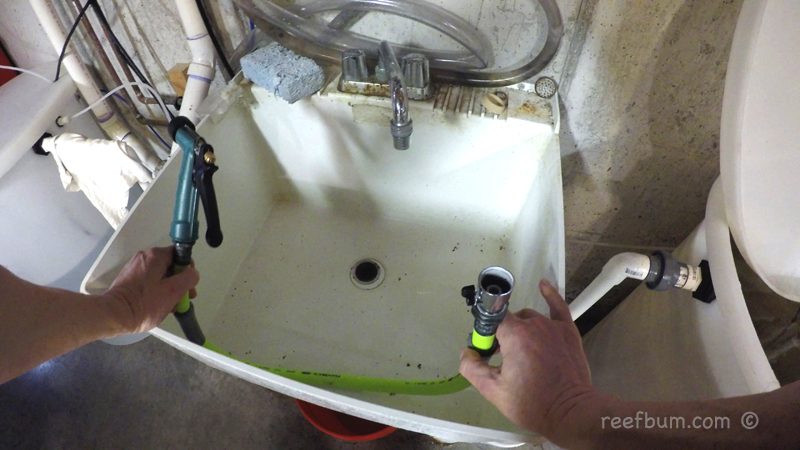
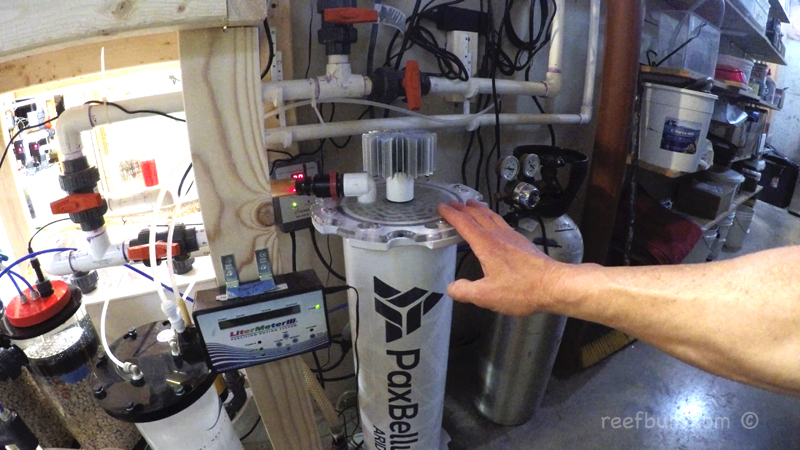
Another thing I do every week is clean the ¼” tubing I use for dosing Kalkwasser. Residue does tend to build up at the end of the tubing so I use a tooth brush to keep it clean.
Other tubes used for dosing are checked as well. Clogged lines are problematic to say the least.
Lastly, every week I clean any salt that has sprayed onto the lenses of my light fixtures to make sure I am not losing any PAR. I also wipe off any salt residue on the tank’s eurobracing and the lids on my Dreambox.
Longer Term Chores
Every three weeks I re-calibrate the two pH probes on my Profilux controller. One monitors pH for the tank and the other keeps track of pH inside my calcium reactor. I also re-calibrate the pH probe for my KH Director.
On a monthly basis, I swap out my activated carbon and periodically add kalkwasser to my dosing container.
One vitally important service I do every two months is clean the dosing pump heads on my GHL doser and KH Director. Peristaltic pumps need constant maintenance to make sure they run at an optimal level.
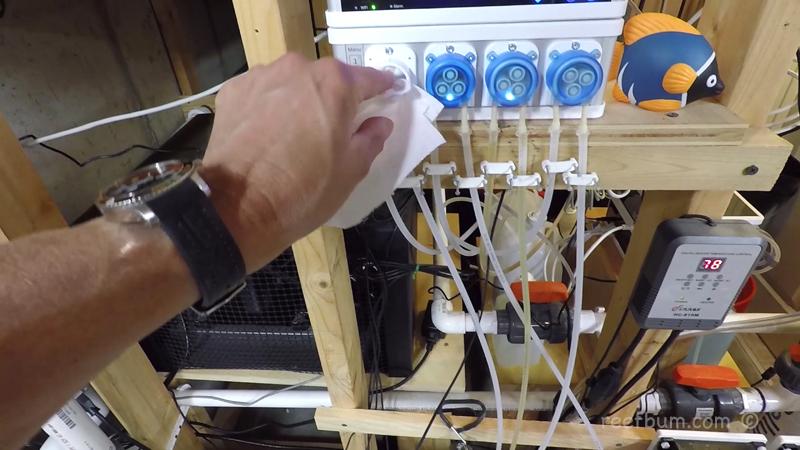
I disassemble the heads and use Acetone to remove dirt from the tubing, rollers and motor shaft. If you don’t do this on a regular basis then the doser can malfunction. You can even get inaccurate readings from the KHD.
Once I am done cleaning the heads I always re-calibrate the pumps to make sure they dose their intended amounts.
Servicing Pumps
Every three months I service my pumps, including the two return pumps, the skimmer pump, the pump that feeds the algae reactor and the MP 40’s and 60’s. I dissemble the pumps and soak all the parts in a one-part vinegar and one-part water solution for thirty minutes. Everything is then scrubbed clean with brushes and rinsed in warm fresh water.
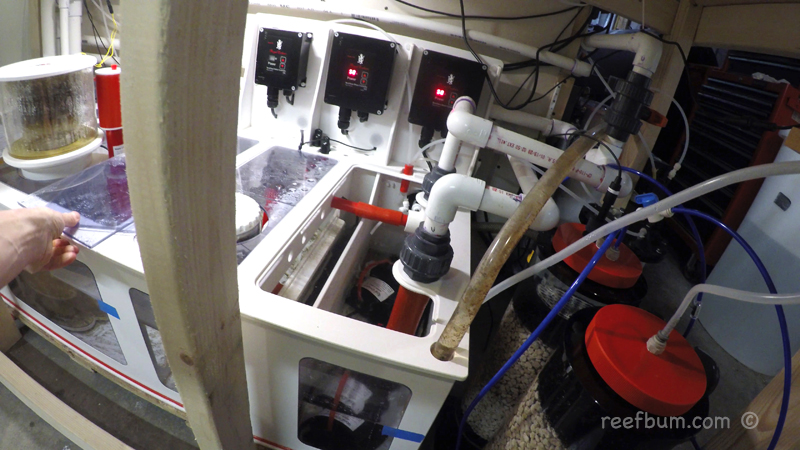
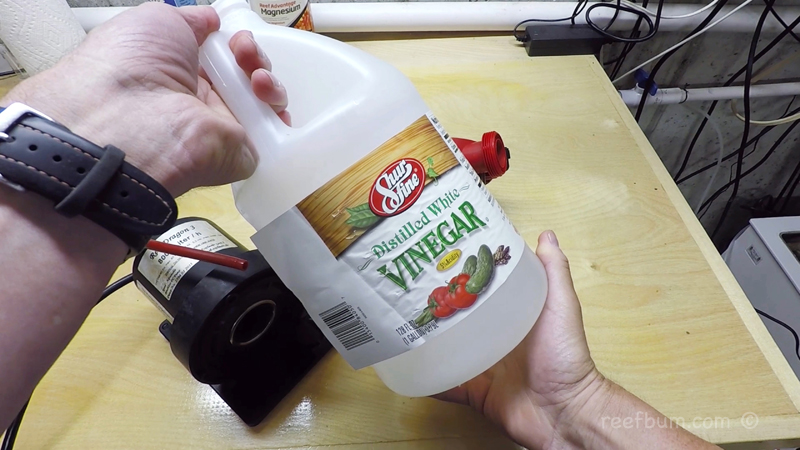
Another item on the checklist is my Spectrapure RODI unit unit. I also use this unit for my 187 gallon tank and I religiously swap out the filter cartridges every 6 months. I also replace the membranes every two or three years.
Having pristine water quality can prevent many problems, especially problematic algae.
As for my Reef Octopus calcium reactor, the plan is to swap out the media once it drops down about halfway in the chamber. This could take four to six months. It will depend on the tank’s calcium and alkalinity demands.
Testing Water Parameters
In terms of testing, I monitor pH, temperature and conductivity on a constant basis with my Profilux controller. dKh is measured twice a day, once during the overnight hours and a second time during the afternoon.
Every week I measure phosphate with a Milwaukee test kit while Calcium, Magnesium and Nitrate are measured via Salifert test kits. In the near future, Calcium, Magnesium and Nitrate will be monitored daily by the soon to be released ION Director.
Big Key – Observation
The last thing I want to touch on is observing the tank. Daily observation is important to me since I can potentially spot trouble not detectable through regular testing. In the past I have had a coral or two that have acted like a canary in a coal mine, exhibiting earlier signs of stress versus other corals in the tank.
In this instance I will usually order an ICP test to get a more detailed look at what is going on with the tank.
Additional Resources
If you would like some help with a new tank build, including help designing a custom aquarium, or help re-configuring your current setup then you can visit this page for more information. And if you are looking to add some equipment, I do sell GHL, Pax Bellum, Reef Octopus Calcium and Kalk Reactors and Royal Exclusiv products, including Dreamboxes, which is the equipment I use and recommend. I also sell Reef Brite metal halide and LED fixtures as well as Maxspect & IceCap Gyres.
As for additional insights and information, please explore my many other reef tank and SPS related articles as well as my YouTube channel. For an even deeper dive into reef tank care you can check out my Reef Keeping Master Class. This online course is an immersive and one of a kind educational tool designed to help reef aquarium hobbyists build and maintain a beautiful SPS reef tank. The course is a series of video presentations with some supplemental video from my YouTube channel. There are also quizzes to help students retain and understand the information presented in the course.
Need some frags…..I can help with that as well 🙂 Please visit my SPS Frag store to see what is available.

